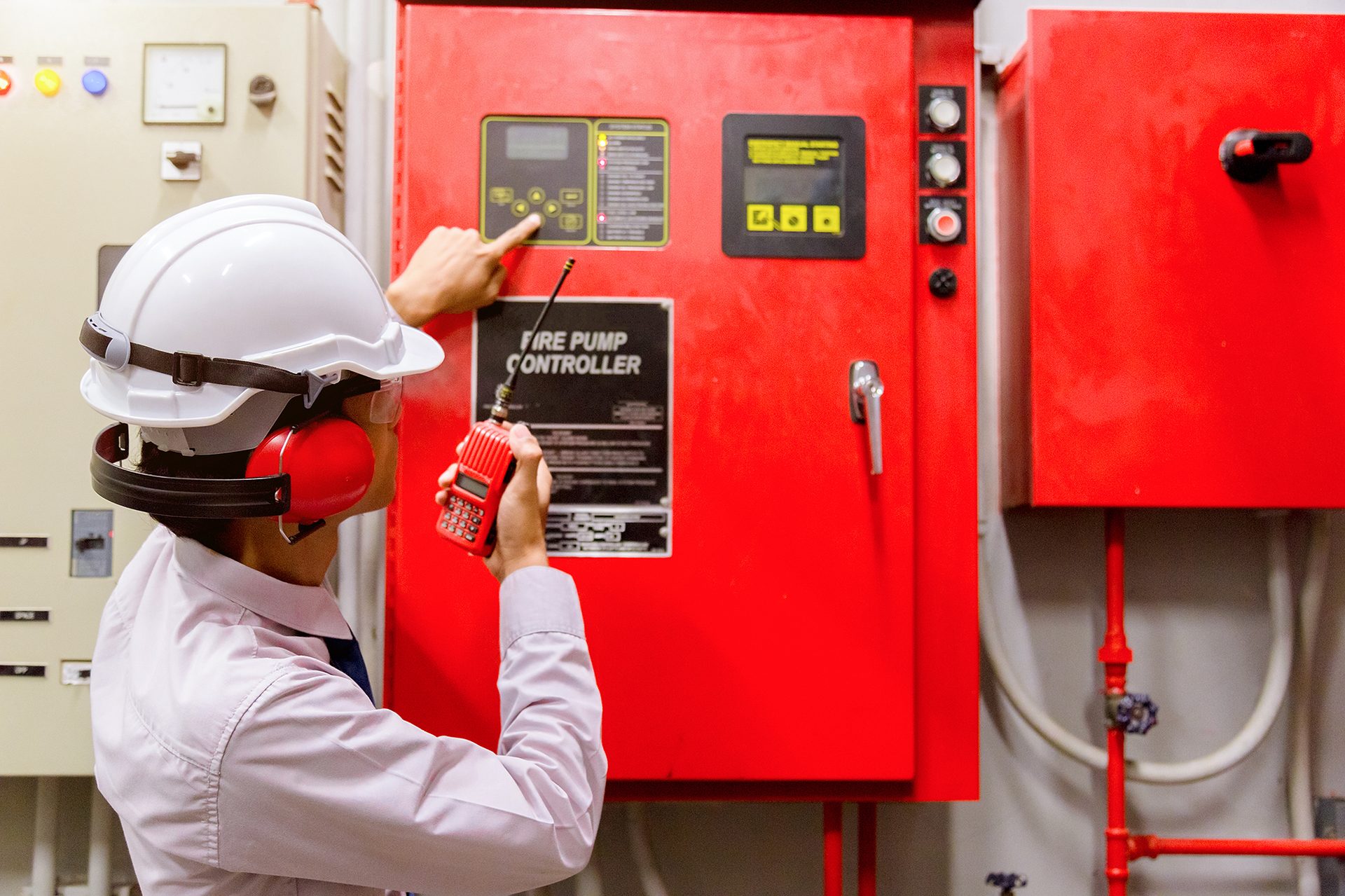// Fire & Life Safety Codes
An Insider’s Look at Fire Codes

In a fast-changing technology landscape, it is critical for security dealers and integrators to have a good understanding of the current codes and standards.
A stockphoto/iStock / Getty Images Plus via Getty Images
A guide to the latest NFPA code updates for security dealers and integrators
By Shawn Mahoney, Senior Engineer, Technical Services at NFPA
The fire alarm and signaling industry is constantly evolving, demanding that fire and life safety codes and standards evolve alongside it. Today, fast-paced technological advancement in the industry is a large driving force behind changes made in NFPA codes. This advancement in technology is both opening new opportunities and increasing risk to the system. As a result, we are seeing additional requirements surrounding cybersecurity, remote access and battery listings be incorporated into newer editions of the code.
In an ever-changing safety landscape, it is more important now than ever that security dealers and integrators are properly knowledgeable, trained and qualified to perform their jobs — and this requires a working understanding of the current codes and standards alongside manufacturers’ instructions on fire alarm and signaling systems and components.
Key Code Changes
Two codes frequently referenced by security dealers and integrators are NFPA 1, Fire Code, and NFPA 101, Life Safety Code. Each of these codes provide requirements for when a fire alarm system will be required based on the occupancy and risk. They also provide guidance as to what type of fire alarm system needs to be installed, specifically what type of initiating and notification devices are required.
However, the number one NFPA code or standard that security dealers and integrators work with is NFPA 72, National Fire Alarm and Signaling Code. This code covers the application, installation, location, performance, inspection, testing and maintenance of fire alarm systems, supervising station alarm systems, as well as fire and carbon monoxide (CO) detection and warning equipment. The National Fire Alarm and Signaling Code provides requirements for the design and installation as well as the continuous inspection, testing and maintenance required for a fire alarm system.
NFPA 72 is updated on a three-year cycle. The most recent published version is the 2022 edition, meaning the next edition will come out in 2025. Some of the major changes from the 2019 to the 2022 edition are as follows:
- Remote Access: A new section has been added to NFPA 72 regarding remote access to a fire alarm control unit. The requirements now allow for programmers and other authorized individuals to access equipment covered by NFPA 72 in order to make necessary programming changes and conduct diagnostics where possible. Requirements include a way to manually terminate remote access, a maximum inactivity time for remote access, and the presence of a qualified person on site while specific activities are underway.
The most recent NFPA 72 edition now allows programmers and other authorized individuals remote access to programming and diagnostics, but still require a way to manually terminate remote access and a maximum inactivity time.
Shinyfamily/iStock / Getty Images Plus via Getty Image

- Cybersecurity: The newly added Chapter 11, which covers cybersecurity, simply requires that the designer consider the cybersecurity of the equipment when required by governing laws, codes, or standards. In addition to the new chapter, a new Annex J has been added. While this annex is not yet enforceable, it provides designers with specific information and guidance on how to achieve a sufficient level of cybersecurity and includes references to additional cybersecurity standards. It’s important to note that Annex J will likely be incorporated in Chapter 11 of the 2025 edition of NFPA 72, making it a requirement for fire alarm system designers and maintainers to comply with additional cybersecurity measures.
- Smoke Alarms Listed for Resistance to Common Nuisance Sources From Cooking: Smoke alarms and smoke detectors installed within 20 feet, or 6.1 meters, of a stationary or fixed cooking appliance will need to be listed for resistance to common nuisance sources from cooking, effective Jan. 1, 2025. The previous effective date was May 1, 2022. However, this was changed to 2025 based on the effective dates of UL217 and UL268, which are the product standards used for listing smoke alarms and smoke detectors.
- Batteries: Effective Jan. 1, 2024, rechargeable batteries that are used as a secondary power supply for control units, devices, and accessories need to be listed or receive a recognized component mark from a nationally recognized testing laboratory. This new listing requirement was added to the 2022 edition of NFPA 72 to acknowledge the new dangers posed by today’s battery technologies, primarily due to the increased energy densities in newer batteries.
In an ever-changing safety landscape, it is more important now than ever that security dealers and integrators are properly knowledgeable, trained, and qualified to perform their jobs —and this requires a working understanding of the current codes and standards alongside manufacturers’ instructions on fire alarm and signaling systems and components.
— Shawn Mahoney

- Battery Correction Factor: When completing battery calculations to determine what size batteries are needed for a fire alarm system, previous editions required the use of a 20 percent safety factor on the calculated amp hour capacity. However, the 2022 edition has updated this to a 25 percent safety factor in order to account for normal aging and temperature effects on the batteries’ capacity.
- Software Security Access: The 2022 edition now requires that the building or facility owner must be provided with security access, or the means of obtaining software security access, for all components that connect to and are part of the building’s life safety network. This includes, but is not limited to, the fire alarm control unit software.
- Abandoned Fire Alarm Equipment: New additions now require any abandoned fire alarm equipment to be removed, and until it is removed, it must be marked “Not in Service.” This is because abandoned equipment left in place can be a hazard to building occupant safety, as it may provide a false sense of security or cause confusion. For example, during the retrofitting of a building that includes the replacement of the fire alarm system, there may be two manual fire alarm boxes located adjacent to one another, causing a person evacuating the building to be confused as to which box is in operation and needs to be pulled.
- Observations: A new term, observations, has been added to the 2022 edition of the code. An observation is a suggested correction, improvement, or enhancement to the fire alarm or signaling system that is not considered to be an impairment or a deficiency. This new definition allows technicians working on a fire alarm system to make observations during inspection, testing, and maintenance. While they are not expected to be design experts, many technicians understand that a fire alarm system is not operating on the latest version of an available firmware, or that a portion of a remodeled area does not have adequate notification appliances. These conditions can be communicated to the system owner via observations, but the owner of the system is not required to address the observations unless they become an impairment or a deficiency.
- Visible Notification Obstructions: Per NFPA 72 2022 edition, the designer must now consider obstructions to visual notification appliances when determining their location.
- Color-Coded Tagging Program: Annex I is a new addition to NFPA 72. The annex contains information about a color-coded tagging program for fire alarm systems. This guidance provides a uniform program to clearly indicate the status of a fire alarm system as of its last inspection or test, as well as any recent service activity on the system. This is a similar program to the one that exists in NFPA 25, Standard for the Inspection, Testing, and Maintenance of Water-Based Fire Protection Systems.
- Carbon Monoxide Detection and Warning Equipment: One major change beyond NFPA 72 that will affect security integrators and dealers is the increased requirements for CO detection in many occupancies in NFPA 101, Life Safety Code. Carbon monoxide detection and warning equipment is required in many different occupancies, including but not limited to new assembly occupancies, new and existing educational occupancies, new and existing healthcare occupancies, new and existing one- and two-family dwellings, new and existing lodging or rooming houses, new and existing hotels and dormitories, and new and existing apartment buildings. These occupancies require CO detectors and other warning equipment to be installed in a room if that room contains permanently installed fuel-burning appliances, and if those rooms are also served by air registers from HVAC equipment for those fuel-burning appliances. This is also the case for spaces adjacent to attached garages.
Annex J will likely be incorporated in Chapter 11 of the 2025 edition of NFPA 72, making it a requirement for fire alarm system designers and maintainers to comply with additional cybersecurity measures.
Black_Kira/iStock / Getty Images Plus via Getty Images

How To Locate Changes from Edition to Edition
It’s important to discuss where professionals can locate changes between editions.
The first place is in the printed code itself. When a new edition is published, it’s printed with change indicators to specify revisions, deletions, and new materials. These indicators are shown at the bottom of the page. In the NFPA 72 Handbook, these same change indicators, as well as a summary of technical changes, are provided as well as a summary of technical changes in the beginning of the handbook.
In digital editions of the code, such as code content hosted on NFPA LiNK, change indicators are provided within the platform. This application additionally enables users to see explanations on the significance of the change and why it was made, with the added ability to compare with text from the previous edition.
Lastly, important changes to the code can be found at nfpa.org/72. There, fire and life safety professionals can view all the draft reports from the technical committee to receive background information on the changes made.
The Importance of Continuous Training
Continuous updates to NFPA codes underscore the industry’s responsiveness to technological advancements and emerging risks. These adjustments, along with broader industry trends, emphasize the increasing complexity of ensuring fire and life safety. To navigate this dynamic environment, security dealers and integrators must prioritize ongoing education and training to stay abreast of current codes, standards, and technological developments. The changes to NFPA 72 and beyond exemplify the industry’s commitment to adapting to new challenges, reinforcing the need for professionals to proactively engage in continuous learning and maintain their certifications. As the fire alarm and signaling industry continues to advance, staying informed and up to date becomes a non-negotiable imperative for safeguarding lives and property. SDM


